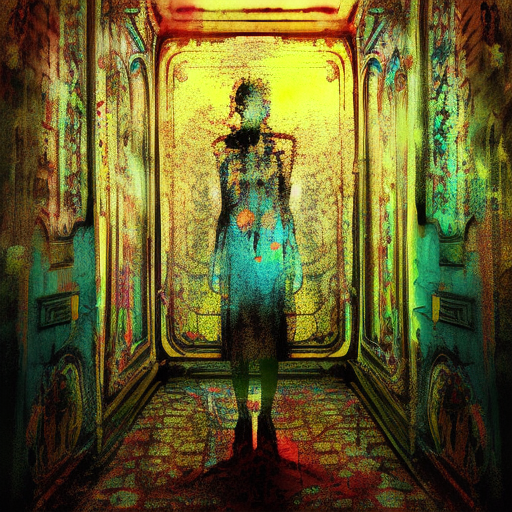The Yellow Wallpaper: A Summary
One-line summary: “The Yellow Wallpaper” is a chilling and thought-provoking short story that explores the themes of mental illness, gender roles, and the oppression of women in the late 19th century.
“The Yellow Wallpaper” by Charlotte Perkins Gilman is a haunting and powerful short story that delves into the mind of a woman suffering from postpartum depression. Set in the late 19th century, the story follows the unnamed narrator as she is confined to a room in a rented country house by her physician husband, John, who believes rest and isolation will cure her “temporary nervous depression.” As the days go by, the narrator becomes increasingly obsessed with the yellow wallpaper in her room, which she believes is alive and holds a woman captive. Through vivid descriptions and a first-person narrative, Gilman explores themes of mental illness, gender roles, and the oppression of women in a patriarchal society.
The Isolation and Oppression of Women
One of the central themes in “The Yellow Wallpaper” is the isolation and oppression of women in the late 19th century. The narrator’s confinement to the room symbolizes the societal expectations placed upon women during this time. Women were often seen as fragile and delicate, and their role was primarily confined to the domestic sphere. The narrator’s husband, John, embodies the patriarchal attitudes of the era, dismissing her concerns and treating her like a child. The room becomes a metaphor for the suffocating nature of these gender roles, as the narrator feels trapped and powerless within its walls.
Mental Illness and the Power of Imagination
Gilman also explores the theme of mental illness and the power of imagination in “The Yellow Wallpaper.” The narrator’s descent into madness is depicted through her obsession with the wallpaper. As she spends more time in the room, her fixation intensifies, and she begins to see a woman trapped behind the pattern. The wallpaper becomes a symbol of her deteriorating mental state, as she becomes convinced that she must free the woman within. This exploration of the blurred lines between reality and imagination highlights the devastating effects of untreated mental illness.
The Subversion of Gender Roles
“The Yellow Wallpaper” challenges traditional gender roles and the notion of female submission. The narrator’s growing obsession with the wallpaper can be seen as a rebellion against the constraints placed upon her by society. Through her writing, she finds a voice and a sense of agency, defying her husband’s attempts to silence her. The story suggests that the suppression of women’s creativity and autonomy can have detrimental effects on their mental well-being.
Key takeaways from “The Yellow Wallpaper”:
- The story explores the isolation and oppression of women in the late 19th century.
- It delves into the theme of mental illness and the power of imagination.
- “The Yellow Wallpaper” challenges traditional gender roles and the submissiveness expected of women.
As the story reaches its climax, the narrator fully succumbs to her madness, tearing down the wallpaper and creeping around the room like the woman she believes is trapped within it. In the final lines of the story, she declares, “I’ve got out at last…in spite of you and Jane. And I’ve pulled off most of the paper, so you can’t put me back!
” This quote encapsulates the narrator’s triumph over her oppressors and her reclamation of her own identity.
“The Yellow Wallpaper” is a haunting and thought-provoking tale that sheds light on the experiences of women in the late 19th century. Through its exploration of mental illness, gender roles, and the oppression of women, the story remains relevant today, serving as a reminder of the importance of autonomy, agency, and the power of the human mind.












